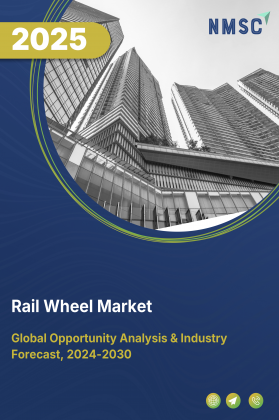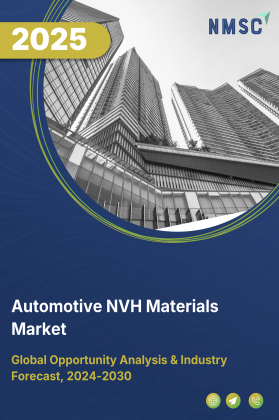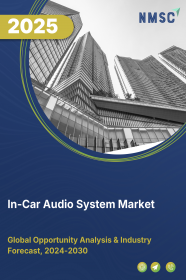
Rail Wheel Market by Rail Type (High Speed, Freight, Passenger, Locomotives), by Wheel Type (Monobloc, Forged, Cast, Resilient, Rubber Tired, Steel Tired, and Others), by Material (Steel, Aluminum, Composite, and Hybrid), by Process (Forging, Casting, Rolling, Others), by Technology (Conventional, Noise-Reduction, High-Durability, and Lightweight), by Maintenance (Preventive, Corrective, Predictive), by Sales Channel (OEM, and Aftermarket), and Others – Forecast, 2025–2030
Industry Overview
The global Rail Wheel Market size was valued at USD 6.17 billion in 2024 and is predicted to reach USD 6.52 billion by the end of 2025. The industry is predicted to reach USD 8.62 billion by 2030 with a CAGR of 5.75% from 2025-2030.
The market is experiencing robust growth, propelled by extensive government-funded rail infrastructure projects aimed at enhancing transportation networks, improving capacity, and modernizing aging systems. The surge in rail transport demand, driven by rapid urbanization and increased freight movement, further amplifies the need for high-performance and durable rail wheels.
Governments worldwide are also prioritizing rail safety and operational efficiency, encouraging the adoption of technologically advanced wheel solutions. However, the market faces notable challenges, including high manufacturing costs and persistent supply chain disruptions, which hinder production timelines and project execution.
Looking ahead, the development of lightweight, durable, and eco-friendly wheel materials offers promising growth opportunities, enabling improved fuel efficiency, lower maintenance needs, and alignment with global sustainability objectives.
Surge in Government-Funded Rail Infrastructure Projects Drives the Market
A primary driver for the rail wheel market growth is the increasing scale of government-backed rail infrastructure projects aimed at enhancing transportation networks. Governments are investing heavily in rail modernization to meet growing passenger and freight demands.
For instance, in 2024, the U.S. Department of Transportation (DOT) allocated USD 2.4 billion for 122 rail improvement projects across 41 states, emphasizing the need for high-quality rail components like wheels to ensure safety and efficiency. This funding directly boosts the demand for rail wheels, supporting expansion.
Growing Demand for Rail Transport and Modernization Boosts Market Expansion
The growing reliance on rail transport, coupled with modernization efforts, is significantly driving the rail wheel market demand. As cities grow and trade volumes rise, governments are modernizing rail systems to handle higher capacities, which in turn boosts the need for durable rail wheels.
According to the Indian Ministry of Railways, Indian Railways to set up the manufacturing facility of Forged Wheel Plant with the capacity of 80,000 wheels per annum for next 20 years. The rising rail transport demand and modernization efforts are driving the market, with initiatives like India’s new Forged Wheel Plant highlighting the push for durable, high-capacity solutions.
Increased Focus on Rail Safety and Efficiency Accelerates Market Growth
Governments are placing a strong emphasis on enhancing rail safety and operational efficiency, which drives the adoption of advanced rail wheel technologies. Modern rail wheels are designed to improve train stability, reduce wear, and minimize the risk of derailments, aligning with stringent safety standards.
According to the Indian Ministry of Railways, the rail wheel factory, Yelahanka, is a unique integrated Plant of the Indian Railways which manufactures Cast Wheels, Forged Axles and Wheelsets under single roof. The Plant achieved a record highest production of 1,96,265 Wheels, 83,054 Axles, and 94,275 Wheelsets in the previous FY 2023-24. This focus on safety ensures that rail operators prioritize high-quality wheels that withstand heavy loads and harsh conditions, further fuelling the market for innovative rail wheel solutions.
High Manufacturing Costs and Supply Chain Disruptions Restrain the Market
High manufacturing costs pose a significant challenge to the industry. The production process involves specialized forging techniques and high-grade materials, such as steel alloys, which are expensive to procure and process. This increases the overall cost of rail wheels, making them less affordable for smaller rail operators or budget-constrained projects.
Additionally, supply chain disruptions, such as delays in sourcing raw materials or logistical bottlenecks, further hinder production timelines. These issues lead to shortages, delaying rail projects and impacting the market. Addressing these challenges through localized sourcing, alternative materials, or streamlined manufacturing processes is essential to mitigate this restraint and ensure market stability.
Development of Lightweight and Durable Wheel Materials Creates Future Growth Opportunities
The development of lightweight and durable rail wheel materials presents a significant opportunity for the rail wheel sector. Innovations in materials like advanced alloys and composites reduce wheel weight, improve fuel efficiency, and enhance durability, aligning with global sustainability goals.
For instance, the world’s first carbon-fiber metro train, CETROVO 1.0, achieved a 25% lighter car body and 50% lighter bogie structure, leading to an 11% reduction in overall train weight and approximately a 7% saving in energy, along with about 130 metric tons of CO₂ emissions avoided per train annually. As rail operators increasingly adopt these advanced materials to improve performance and reduce maintenance costs, the market has a growing opportunity to deliver innovative, sustainable solutions.
Market Segmentation and Scope of Study
The rail wheel market report is segmented by rail type, wheel type, material, manufacturing process, technology, maintenance, distribution channel, end user, and region. Rail types include high-speed rail, freight wagons, passenger wagons, and locomotives. Wheel types consist of monoblock, forged wheels, cast wheels, resilient wheels, rubber-tired wheels, steel-tired wheels, and others. Materials comprise steel (further segmented into carbon steel and alloy steel), aluminum, composite materials, and hybrid materials. The manufacturing process covers forging, casting, rolling, and additive manufacturing (3D printing). Technology segments include conventional wheels, noise-reduction wheels, high-durability wheels, and lightweight wheels. Maintenance is categorized into preventive, corrective, and predictive. Distribution channels are split between original equipment manufacturers (OEMs) and the aftermarket. End users include railway operators (both passenger and freight), rolling stock manufacturers, maintenance and repair organizations (MROs), and government and public sector entities. Regional analysis includes North America, Europe, Asia-Pacific, and the Rest of the World.
Geographical Analysis
North America leads the global rail wheel market share, supported by robust government investment and a mature rail infrastructure. In 2024, the U.S. Department of Transportation (DOT) committed USD 2.4 billion to fund 122 rail improvement projects across 41 states, reinforcing the region’s position as a front-runner in rail modernization. This steady financial backing continues to drive infrastructure upgrades and sustain long-term market growth across the region.
Europe remains a key market, with policy-driven growth aimed at clean manufacturing and industrial resilience. In February 2025, the European Commission announced a USD 104.97 billion initiative under the EU Clean Industrial Deal to support domestic clean-tech production and ease power costs for energy-intensive sectors. This strategic push toward sustainability and competitiveness is expected to strengthen the region’s role in shaping the future of the industry.
Asia-Pacific emerges as the fastest-growing region, propelled by rapid rail infrastructure development and government-led sustainability efforts. Countries like Japan, India, and South Korea are advancing eco-friendly rail initiatives. For example, Indian Railways plans to establish a Forged Wheel Plant with an annual capacity of 80,000 wheels over the next 20 years. This aggressive expansion underscores the region's long-term dominance in rail innovation, manufacturing, and capacity building.
The Rest of the World (RoW), including Latin America, the Middle East, and Africa, is showing increasing promise. Saudi Arabia is spearheading investment with over USD 267 billion earmarked for its logistics sector under Vision 2030, targeting an 8,000 km rail network to position itself as a global logistics hub. These ambitious infrastructure efforts are unlocking new growth opportunities and positioning RoW markets as emerging players in the global industry.
Strategic Innovations Adopted by Key Players
-
Key players in the rail wheel industry are strategically focusing on technological advancements, capacity expansion, and strategic partnerships to strengthen their market position and capitalize on the growing demand for efficient and durable rail components.
-
Recent developments include the establishment of new forged wheel manufacturing facilities, the adoption of lightweight and noise-reduction technologies, and collaborations with railway operators to support next-generation rolling stock programs.
-
Nippon Steel is pursuing an ambitious expansion strategy, highlighted by its USD 14.9 billion acquisition bid for U.S. Steel. The company has also partnered with U.S. defense contractors AM General and Mandus Group to co-develop next-generation 105mm and 155mm artillery systems, addressing evolving military requirements.
-
Lucchini RS remains a vital supplier of premium railway components, including wheels, axles, tires, and wheelsets, serving a wide range of rail applications such as high-speed, intercity, heavy haul, and mass transit systems. Lucchini’s products play a critical role in maintaining global railway safety and operational efficiency. These efforts align with the broader market trend toward sustainable rail solutions, supported by the U.S. Environmental Protection Agency’s report that rail emits 75% less greenhouse gases per ton-mile than trucks.
Key Benefits
-
The report provides quantitative analysis and estimations of the industry from 2025 to 2030, which assists in identifying the prevailing market opportunities.
-
The study comprises a deep dive analysis of the current and future rail wheel market trends to depict prevalent investment pockets in the sector.
-
Information related to key drivers, restraints, and opportunities and their impact on the market is provided in the report.
-
Competitive analysis of the players, along with their market share, is provided in the report.
-
SWOT analysis and Porter's Five Forces model are elaborated in the study.
-
Value chain analysis in the market study provides a clear picture of the roles of stakeholders
Rail Wheel Market Key Segments
By Rail Type
-
High Speed
-
Freight Wagons
-
Passenger Wagons
-
Locomotives
By Wheel Type
-
Monoblock
-
Forged Wheels
-
Cast Wheels
-
Solid
-
Hollow
-
Composite
-
Resilient
-
Rubber Tired
-
Steel Tired
-
Others
By Material
-
Steel
-
Carbon Steel
-
Alloy Steel
-
-
Aluminum
-
Composite Materials
-
Hybrid Materials
By Manufacturing Process
-
Forging
-
Casting
-
Rolling
- Additive Manufacturing (3D Printing)
By Technology
-
Conventional Wheels
-
Noise-Reduction Wheels
-
High-Durability Wheels
-
Lightweight Wheels
By Maintenance
-
Preventive Maintenance
-
Corrective Maintenance
-
Predictive Maintenance
By Distribution Channel
-
OEM (Original Equipment Manufacturer)
-
Aftermarket
By End-User
-
Railway Operators
-
Passenger Rail Operators
-
Freight Rail Operators
-
-
Rolling Stock Manufacturers
-
Maintenance and Repair Organizations (MROs)
-
Government and Public Sector
By Region
-
North America
-
The U.S.
-
Canada
-
Mexico
-
-
Europe
-
The UK
-
Germany
-
France
-
Italy
-
Spain
-
Denmark
-
Netherlands
-
Finland
-
Sweden
-
Norway
-
Russia
-
Rest of Europe
-
-
Asia-Pacific
-
China
-
Japan
-
India
-
South Korea
-
Australia
-
Indonesia
-
Singapore
-
Taiwan
-
Thailand
-
Rest of Asia-Pacific
-
-
Rest of the World
-
Latin America
-
Middle East
-
Africa
-
Key Players
-
Maanshan Kingrail Technology Co., Ltd
-
CRRC Corporation
-
Kolowag AD
-
Maanshan Tianjun Machinery Manufacturing Co., Ltd.
-
Railteco Equipment Co., Ltd.
-
Lucchini RS S.p.A.
-
Kafriz Co
-
Appentus Technologies Pvt. Ltd
-
Amsted Rail Company, Inc.
-
Titagarh Rail System Ltd.
-
Royal Mech Industries
-
Molycop
-
CAF MIIRA S.A
-
Taiyuan Heavy Industry Co., Ltd
REPORT SCOPE AND SEGMENTATION:
|
Parameters |
Details |
|
Market Size in 2025 |
USD 6.52 Billion |
|
Revenue Forecast in 2030 |
USD 8.62 Billion |
|
Growth Rate |
CAGR of 5.75% from 2025 to 2030 |
|
Analysis Period |
2024–2030 |
|
Base Year Considered |
2024 |
|
Forecast Period |
2025–2030 |
|
Market Size Estimation |
Billion (USD) |
|
Growth Factors |
|
|
Countries Covered |
28 |
|
Companies Profiled |
15 |
|
Market Share |
Available for 10 companies |
|
Customization Scope |
Free customization (equivalent to up to 80 working hours of analysts) after purchase. Addition or alteration to country, regional, and segment scope. |
|
Pricing and Purchase Options |
Avail customized purchase options to meet your exact research needs. |

















 Speak to Our Analyst
Speak to Our Analyst

























